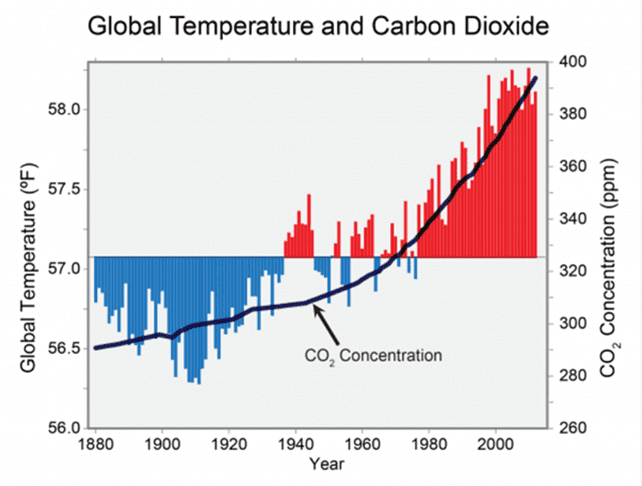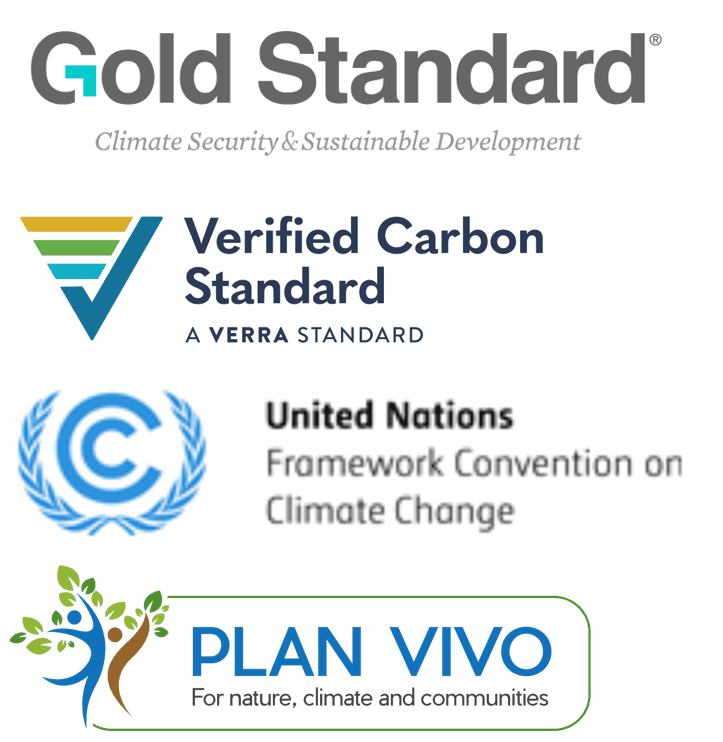
There are many negative stereotypes surrounding the process of carbon offsetting. It has been called an “excuse to carry on polluting”, “green-washing”, or an “enjoyment tax”.
These myths can be dispelled by explaining the origin of carbon offsetting and the mechanisms that support the process. The key takeaway is that the process of carbon offsetting is not smoke and mirrors. It is built on a solid foundation with a real desire to tackle climate change.
Rachel Goult, Managing Director
Yacht Carbon Offset
The Origin of Carbon Offsetting
The United Nations Framework Convention for Climate Change (UNFCCC) is the international environmental treaty negotiated at the United Nation’s Rio Earth Summit in 1992. At this time international communities were waking up to the reality of climate change. Carbon offsetting was developed by the UNFCCC in response to the urgent need to curtail global warming.
The UNFCCC is motivated to “stabilize greenhouse gas concentrations in the atmosphere at a level that would prevent dangerous interference with the climate system by human activity”.
As the UNFCCC does not set binding limits on greenhouse gas emissions for individual countries and contains no enforcement mechanisms it is not a legally binding agreement. Instead, the treaty is the framework around which legal instruments have been built.
The Conference of Parties (COP)1
The UNFCCC is supported by the governments of many countries around the World. These governments (known as Parties) agreed to meet annually to discuss the solutions to climate change.

The first COP meeting (COP 1) was held in 1995 in Berlin. The Parties have since met every year to discuss the issue of climate change and decide on collective actions. This year’s meeting, COP 26, will be hosted by the United Kingdom in in Glasgow in November 2021.
As you can imagine, the bringing together of hundreds of world leaders and thousands of government representatives, each with their own set of criteria and objectives, is not an easy process. It is no surprise that not every COP has resulted in notable progress.
There are three COP meetings that have resulted in significant advancements:
- COP 3, Kyoto, 1997: Adoption of the Kyoto Protocol
- COP 18, Doha, 2012: Amendment of the Kyoto Protocol
- COP 21, Paris, 2015: Adoption of the Paris Agreement
The 1997 Kyoto Protocol
The 1997 Kyoto Protocol was adopted on 11 December 1997, although a complex ratification process meant that it only entered into force on 16 February 2005. As of today, there are 192 Parties to the Kyoto Protocol.
The Kyoto Protocol puts into action the UNFCCC. Under the Kyoto Protocol 37 industrialized countries (and economies in transition) committed to limiting and reducing greenhouse gas (GHG) emissions in accordance with agreed individual targets. These binding targets added up to an average of 5 percent emission reduction, in comparison to 1990 levels, per country over the five year period 2008–2012 (the first commitment period).
The protocol places a heavy burden on industrialised economies in response to the fact that they are largely responsible for the historic build-up of high levels of GHG emissions.
The 2012 Doha Amendment
The Doha Amendment was effectively the adoption of the Kyoto Protocol for a second commitment period (January 2013 to December 2020). The Parties committed to reduce GHG emissions by at least 18 percent below 1990 levels in the eight-year period from 2013 to 2020, a more aggressive target than the 5 percent commitment in the first period. Other amendments included a revised list of GHG to be reported on by Parties in the second commitment period.
The 2015 Paris Agreement
The Paris Agreement is a landmark arrangement to combat climate change. Its central aim is to strengthen the global response to climate change by acting to keep the global temperature rise below this century 2oC in relation to pre-industrial levels. The Agreement also attempts to limit temperature increase to 1.5oC.
The Paris Agreement requires all Parties to define their best efforts through “nationally determined contributions (NDCs)” and to strengthen these efforts in the years ahead. In addition, all Parties are required to report regularly on their emissions and on their implementation efforts.
The Paris Agreement opened for signature on 22 April 2016 – Earth Day – at UN Headquarters in New York. It entered into force on 4 November 2016 and, as of July 2021, was ratified by 191 of the UNFCCC’s 197 members.
The Paris Agreement has been important in raising awareness of the urgent need to slow, halt and ultimately reverse the increase of greenhouse gases in the atmosphere, which are unequivocally the cause of increasing global temperatures.

The Agreement put in place a requirement for international governments to carry out a global stocktake every 5-years, assessing their collective progress towards achieving the agreement. The first progress report will be presented at COP26 in Glasgow.
Source: U.S. Global Change Research Program3
Clean Electrification is Crucial for Developing Countries
Continued and increasing investment in clean electricity for developing countries is essential to limit global warming. The urbanisation and industrialisation of these economies requires an increase of energy production. The energy sector is responsible for almost three-quarters of the emissions that have pushed average global temperatures 1.1°C higher than the pre-industrial age, resulting in visible impact on weather and climate extremes.. Therefore, it is essential that developing countries have the support and investment to develop renewable power sources.
Carbon Offsetting Supports Clean Energy Development in Developing Countries
One of the crucial objectives of the United Nations is to stimulate much-needed private investment in clean energy projects in developing countries. Without investment, clean electrification in developing countries will not occur at the required rate. The 1997 Kyoto Protocol established flexible market mechanisms to generate this financing, based on the trade of emissions permits.
One of these mechanisms is the Carbon Development Mechanism (CDM) which enables private entities and individuals to provide financial support to emission reduction projects located in developing countries. Projects operating under the CDM generate certified emission reduction credits (CERs), each equivalent to one tonne of emission savings achieved by the project.

A CER is a standardized emissions offset instrument saleable via an international registry. The sale generates important revenues to support the project’s financing. The concept of carbon offsetting is that, through the issuance of certified emission reduction (CER) credits generated by projects, a net climate benefit is transferred from one entity to another.
For example, electricity generated by a renewable power plant (e.g. solar or wind) does not produce carbon emissions. Carbon emissions are generated when fossil fuels are burned. The emission savings are calculated by quantifying the greenhouse gasses that would have been released if a fossil fuel power plant had generated the same quantity of electricity. These emissions have been prevented because the electricity was provided by a renewable energy source. The project will issue CERS (otherwise known as carbon credits) equivalent to the quantity of emissions saved.
Carbon Offset Process is built on a Solid Foundation
The 1997 Kyoto Protocol’s CDM is the basis for Carbon Offsetting. A project supported by the CDM must exhibit the following characteristics:
• It must provide emission reductions greater then what would otherwise have occurred.
• It must receive approval from a Designated National Authorities (for example Gold Standard, Verra, UNFCCC etc).
• It must undergo through a rigorous qualification, public registration, and issuance process.
The carbon offset process is based on the principle that “it does not matter where emissions are reduced, as long as the emissions are reduced”. One carbon credit sold represents one tonne of greenhouse gas saved by the project it supports.

In conclusion…
Carbon Offsetting has numerous benefits, but most importantly it:
- Supports the development of emission-reduction projects in developing countries that do not have the financial means to develop such projects
- Stimulates sustainable development
- Stimulates emission reductions that are additional to what would otherwise have occurred
- Far fewer carbon reduction project would exist without the subsidy received from the carbon offset process.
- Transparency: Regulated, monitored, and validated
Carbon Offset is NOT:
- An excuse to carry on polluting
- Greenwashing
- An Enjoyment Tax
Carbon Offsetting is just one of many ways to protect the world we live in. It should be an action employed in conjunction with other Environmental & Sustainability actions.

Sources:
- 1United Nations, un.org
- 2International Energy Authority, iea.org
- 3S. Global Change Research Program, www.globalchange.gov
About Yacht Carbon Offset
Yacht Carbon Offset provides an environmental carbon offset service to the superyacht industry. We allocate greenhouse gas emission reductions from projects that are relevant to the yachting community. These are typically renewable energy projects, such as solar, wind and geothermal technologies, located in coastal or island locations to reflect the maritime nature of our clientele, for example Caribbean or coastal locations. We are currently exploring options to offer our clients blue carbon credits that support marine ecosystem projects in the near future.

